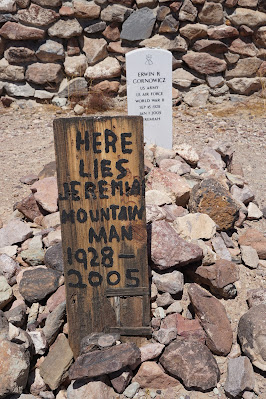During California's largest silver strike in 1881 people flocked to Calico. The region once boasted 500 mines, but when silver lost its value in the mid-1890s, all of Calico's inhabitants left. By the mid-1930s, only four residents were left.
 |
| Readsign to Calico |
In 1951, Walter Knott (the very man who brought Knotts Berry Farm) reinvented the town from his uncle who made his fortune with a Calico mine, bought the collection of dilapidated shacks and mines.
In 1966, Walter donated the town to the county of San Bernardino.
The town is pretty big, and my favorite part about visiting is the mountain behind that show's the name of the city, it is excellent for framing pictures of the old unique buildings. The town is a great representation of what life in the time period was like.
 |
| Calico name on the mountain |
Here are some of our favorite spots.
Bottle House: It is built entirely of bottles and is an excellent place to take pictures.
 |
| Bottle House |
Maggie Mine: We spent sometime exploring this old mine. They had mannequins showing where people slept and worked in the mine.
 |
| Maggie Mine |
The "glory hole," where they pulled out $65,000 dollars' worth of silver.
 |
| Glory Hole - $65k worth of silver |
When we exited, we were at the base of the scenic view. A short little hill walk gave us a great view of the town below.
 |
| The town below |
School House:
 |
| The Calico School House, built 1885 and restored in 1955 |
The town itself:
 |
| Calico Town |
The most compelling area for us was the Calico Graveyard, where mountaineers and prospectors from Calico's past - and modern-day boosters and cowboys - are buried under handmade markers, their graves covered in desert rock.
 |
| Calico Cemetery |
One faux-aged wooden marker reads; Here lines Jeremiah Mountain Man 1928-2005.
 |
| Jeremiah Mountain Man |
Calico Ghost Town is a great place to at least go once. Thanks for traveling with us and reading, safe travels!





